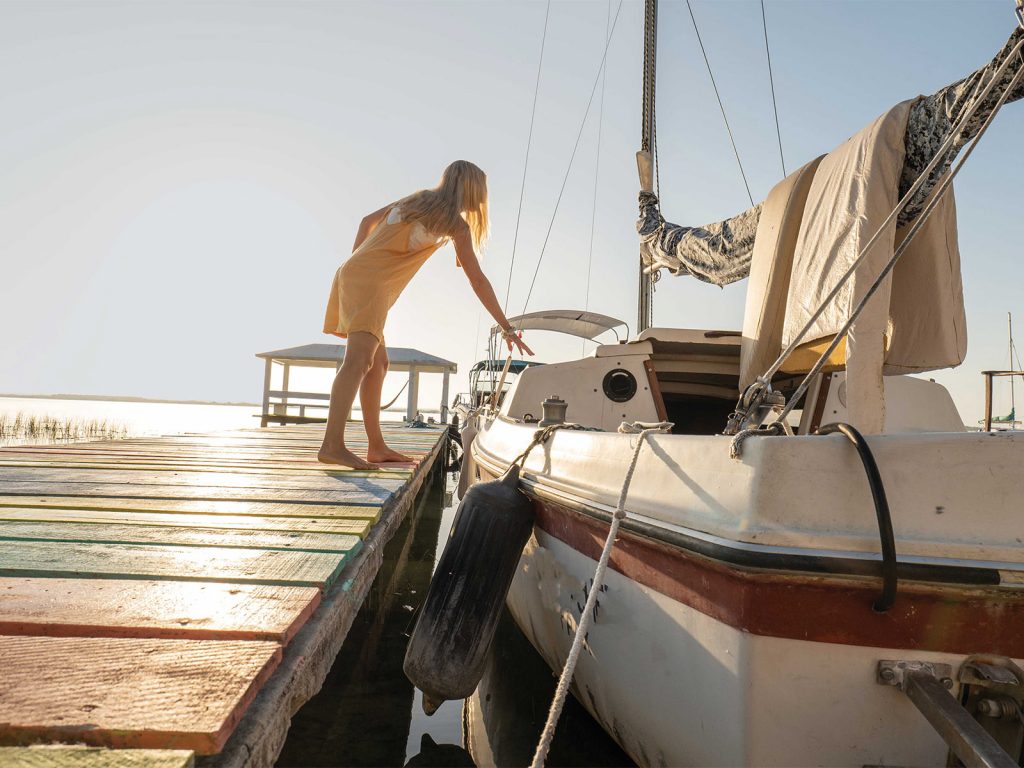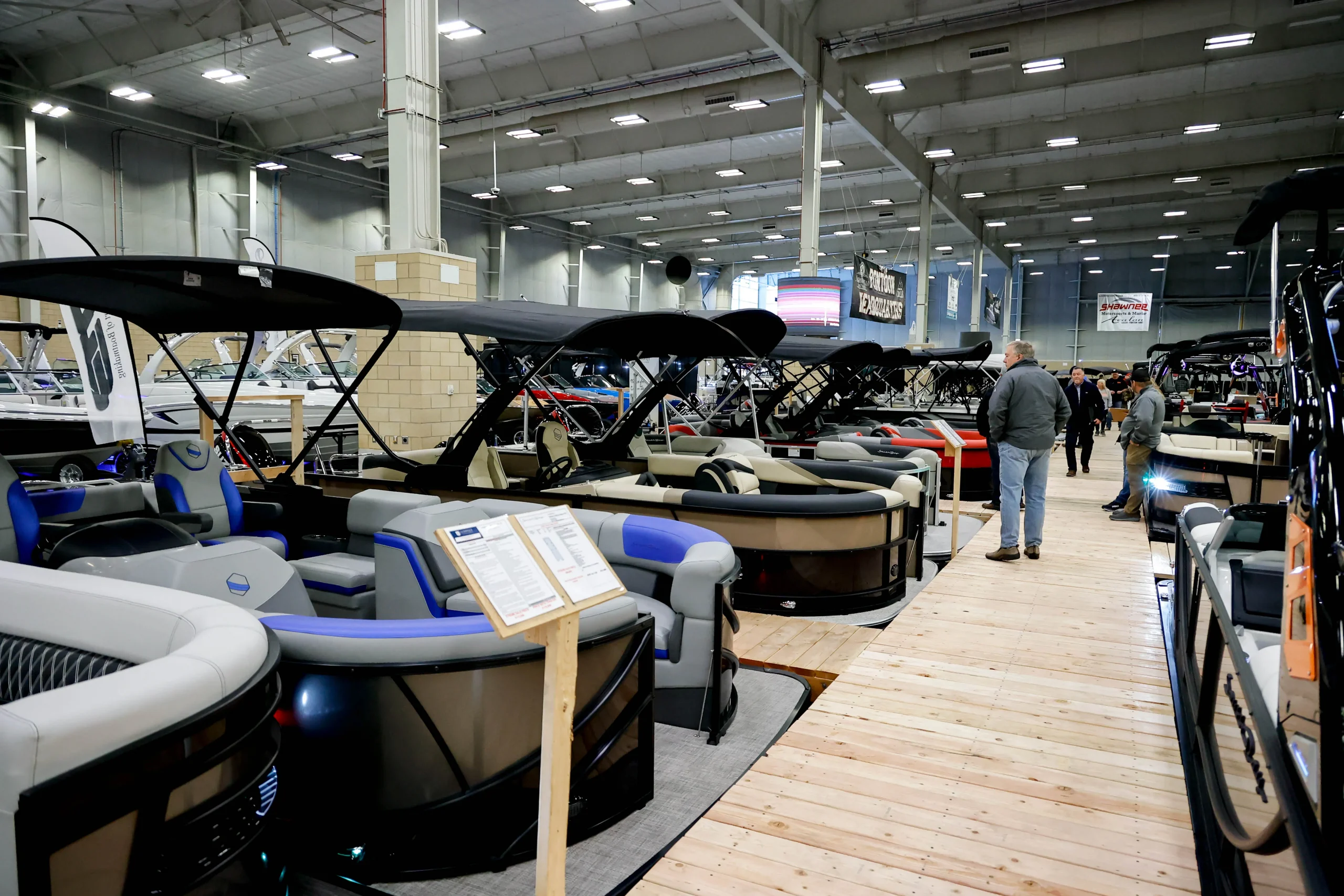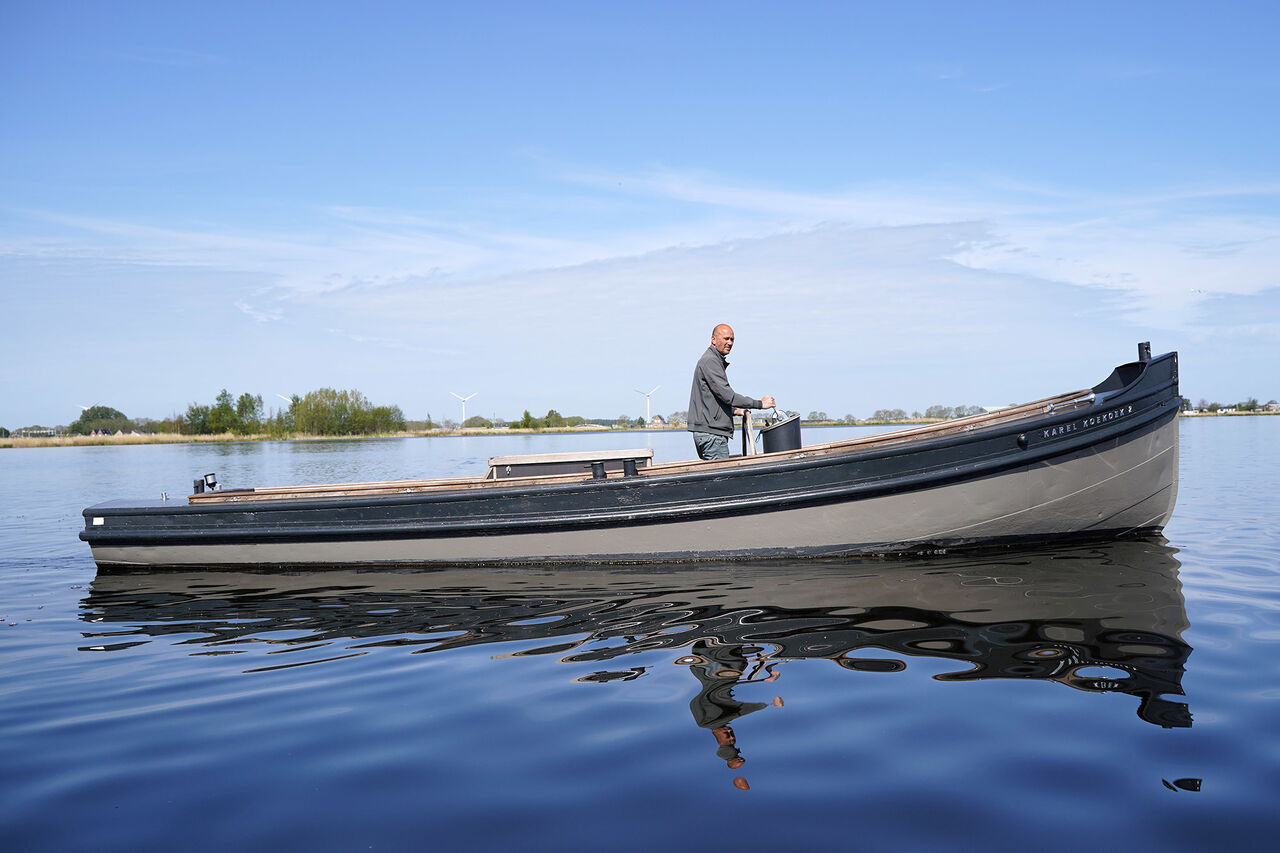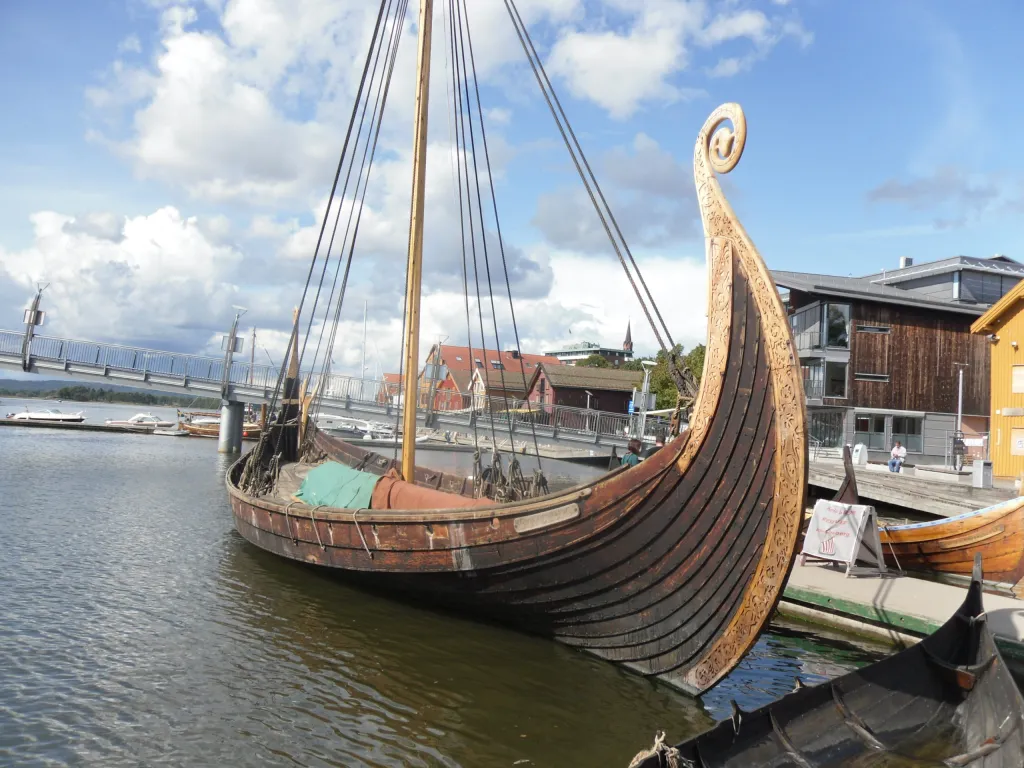Florida to Bahamas by Boat: A Cool Escape or Daring Challenge? Sailing the Razor's Edge of Paradise
Florida to the Bahamas by boat is a journey that's equal parts thrill and tranquility. It's a trip that'll make you feel like a modern-day explorer, charting your course across the crystal-clear waters of the Atlantic.

The distance from Florida to the Bahamas ranges from 50 to 200 miles, depending on your starting point and destination island. This makes it a feasible voyage for most boats, but don't let the short distance fool you - it's not a trip to be taken lightly.
The Gulf Stream, a powerful ocean current, stands between Florida and paradise. It's like nature's own rollercoaster, capable of pushing boats off course or making for a bumpy ride.
But for those who respect the sea and come prepared, it's just another part of the adventure. Once you've conquered the crossing, you're rewarded with over 700 islands to explore, each with its own flavor and character.

This journey isn't just about getting from point A to point B. It's about the salty air in your face, the endless horizon, and the promise of pristine beaches and rich island culture.
Whether you're looking for a tropical getaway or seeking to test your seafaring skills, a boat trip from Florida to the Bahamas offers both in spades.
Key Takeaways
- The boat trip from Florida to the Bahamas spans 50-200 miles across the Gulf Stream.
- Proper preparation and respect for the sea are crucial for a safe and enjoyable journey.
- The Bahamas offer over 700 islands with diverse experiences for boaters to explore.
Preparing for Your Journey
Setting off from Florida to the Bahamas by boat isn't just a joyride. It's an adventure that demands respect, preparation, and a bit of grit. Get ready to navigate the open seas like a seasoned sailor.
Determining the Best Time to Set Sail
Timing is everything when it comes to this nautical escapade. The best window? Late spring to early summer.
Why? The weather's more predictable, and you'll dodge hurricane season's unpredictable tantrums.
Speaking of hurricanes, steer clear of June to November. That's when these watery beasts like to play.
Keep an eye on that weather forecast like it's your lifeline - because it is.
Winter can be a roll of the dice. Sure, you might catch some perfect days, but you could also run into some nasty cold fronts. Not exactly the tropical paradise you're after.

What to Pack for the Voyage
Packing for this trip isn't like throwing a few swimsuits in a bag for a beach weekend. You're preparing for days at sea, potentially rough weather, and the scorching Caribbean sun.
Start with the basics:
- Sunscreen (SPF 50+ is your new best friend)
- Long-sleeve shirts and pants (trust me, sunburn is not a souvenir you want)
- A good hat and sunglasses
- Seasickness medication (even if you think you're immune)

Food and water are crucial. Pack more than you think you'll need. A well-stocked cooler is worth its weight in gold out there.
Don't forget the essentials for your boat:
- Extra fuel
- Flares
- First aid kit
- Life jackets (one for each person)

Boat Maintenance and Safety Checks
Your boat isn't just transportation; it's your lifeline out there. Treat it with respect.
Before you even think about leaving the dock, give that vessel a thorough once-over.
Check the engine. Then check it again. Make sure you've got enough oil, coolant, and spare parts.
Test all your electronics - radio, GPS, depth finder. If something's off, fix it now. The middle of the Gulf Stream is no place for breakdowns.
Safety equipment isn't optional. It's a must.
Life jackets, fire extinguishers, flares - make sure they're all in good condition and easy to access. Because when you need them, you'll need them fast.

Understanding Nautical Charts and GPS
Charts and GPS are your roadmap on this watery highway. Know how to read them like the back of your hand.
They'll tell you where the shallow spots are, where the currents get tricky, and where you can find safe harbor if things get hairy.
GPS is great, but don't rely on it exclusively. Electronics can fail. Always have paper charts as backup. Know how to plot a course the old-fashioned way.
Learn the markers and buoys. They're like road signs out there, pointing the way and warning of dangers. Ignore them at your peril.
Practice using your navigation tools before you set out. It's not the time to be fumbling with unfamiliar equipment when you're trying to avoid a reef.
Navigation and Course Plotting
Crossing from Florida to the Bahamas isn't just a Sunday boat ride. It's a test of skill, nerve, and nautical know-how.
You're up against nature's watery highway, battling invisible forces that can make or break your journey.
Conquering the Gulf Stream
The Gulf Stream, that beast of an ocean current, is the first hurdle. It's like a giant, invisible conveyor belt, pushing north at speeds up to 2.5 knots.
Ignore it, and you'll end up way off course, maybe even in Bermuda.
To beat it, you need to plot a course that looks like a sine wave.
It's not about going straight. It's about zigzagging your way across, using the current to your advantage.
Smart captains stay on their toes, constantly adjusting their heading. One eye on the GPS, one on the horizon. It's a dance with the ocean, and you better know the steps.

Navigating Currents and Weather
Weather in these parts can turn on a dime. One minute you're cruising under blue skies, the next you're in the middle of a squall that'd make Neptune himself think twice.
Wind is your frenemy here. A good tailwind can push you along nicely. But if it's blowing against the Gulf Stream? That's a recipe for waves that'll toss your boat around like a cork in a washing machine.
Keep a weather eye out and don't be too proud to turn back if things look dicey. The Bahamas aren't going anywhere, but your boat might if you're not careful.
Selecting the Ideal Heading and Speed
Picking the right heading is like choosing the perfect wine - it depends on a lot of factors.
You've got to consider your boat's speed, the Gulf Stream's current, and the wind direction.
It's a balancing act that'd make a tightrope walker sweat.
If you're in a powerboat doing 15-20 knots, you might make it to Bimini in a few hours. But slower boats? They're in for a longer haul.
You need to factor in drift, adjust your course, and keep a steady hand on the wheel.
Remember, the straight line on your chart? That's just a suggestion.
The real path is a crooked, winding route that only reveals itself as you go. Stay alert, stay flexible, and maybe, just maybe, you'll make it to those crystal-clear Bahamian waters in one piece.
Island Hopping in the Bahamas
The Bahamas offers a paradise of island-hopping adventures. From the Abacos to the Exumas, each stop reveals a new slice of tropical heaven.
The Allure of the Abacos and the Exumas
The Abacos are a boater's dream. These islands boast calm waters and charming settlements. Green Turtle Cay is a must-visit, with its colorful houses and friendly locals.
The Exumas? They're like nature showing off. Picture 365 cays spread over 120 miles of crystal-clear water.
Here, you'll find the famous swimming pigs and friendly nurse sharks.
Sailors love the steady trade winds. Divers can't get enough of the blue holes and coral reefs. It's a place where every day feels like a new discovery.

Discovering Lesser-Known Cays and Inlets
Beyond the popular spots lie hidden gems. The Berry Islands offer secluded beaches and world-class fishing.
It's where you go to escape the crowds and find your own slice of paradise.
Tiny cays dot the waters, each with its own personality. Some are nothing more than a patch of sand and a few palm trees. Others hide secret caves or abandoned lighthouses.
These lesser-known spots are where the real adventure happens. You might stumble upon a perfect snorkeling spot or a beach all to yourself. It's the Bahamas at its most raw and beautiful.

The Unique Charm of the Out Islands
The Out Islands are where you go to see the real Bahamas. These islands move at their own pace. Life here is slow, laid-back, and utterly enchanting.
Each island has its own flavor. Eleuthera is known for its pineapple farms and pink sand beaches. Long Island boasts the world's deepest blue hole. Andros is a paradise for bonefishing and bird watching.
The Out Islands offer a glimpse into Bahamian life away from the tourist crowds.
Here, you'll find small villages, local rum shops, and miles of untouched nature. It's a chance to disconnect and experience island life as it's meant to be.
Anchoring and Mooring
Dropping anchor in the Bahamas is like diving into a postcard. Crystal-clear waters, pristine beaches, and a sense of freedom that'll make you wonder why you ever lived on land. But it's not all rum and coconuts, my friends. You gotta know your shit.
Selecting the Perfect Spot to Drop Anchor
Finding the right spot to park your floating home is an art form. Look for protected coves with good holding ground.
Sand bottoms are your best friend. Avoid coral reefs - they're fragile ecosystems, not your personal parking lot.
Check the depth and swing room. You don't want to end up playing bumper boats with your neighbors when the wind shifts.
In some spots, you might find mooring balls. These can be a godsend.
Just remember to run your bow line through the loop of the pickup line. Don't tie directly to it - that's a rookie move that'll stress the anchor.

Marina Amenities and Docking Protocol
Marinas in the Bahamas range from bare-bones to luxury resorts. Some offer full hookups, others just a place to tie up and dream of a hot shower.
When approaching a marina, hail them on the VHF. They'll guide you in like a pro. Have your fenders and dock lines ready. It's a dance, and you don't want to be the one stepping on toes.
Many marinas double as ports of entry. You'll need to clear customs and immigration. Have your paperwork in order and your boat shipshape. First impressions matter, even in paradise.
Remember, marina etiquette is universal. Be respectful, keep your noise down, and always tip the dockhand. A cold beer goes a long way in making friends in foreign ports.
Legal and Customs Procedures
Maritime bureaucracy can be a pain, but it's a necessary evil. With the right prep, you'll breeze through like a pro.
Checklist for Clearing Customs in The Bahamas
First things first: paperwork. Each soul on board needs an Immigration Arrival Card. Can't grab it online, but the Bahamas Tourist Office in Florida will mail it to you.
Next up, the vessel. You'll need:
- Boat registration
- Proof of ownership
- Passports for everyone
- Customs declaration form
Don't forget the cold hard cash. Entry fees are $150 for boats up to 35' and $300 for bigger beasts. That covers three people, with an extra $20 per additional head.
Guns on board? Declare them. The Bahamas isn't your personal Thunderdome.
Fishing Regulations and Permits
Good news, fishing fanatics. Your Bahamas cruising permit doubles as a fishing license. But don't go full Hemingway just yet.
There are rules:
- No spearfishing with scuba gear
- No taking conch or lobster in protected areas
- Catch limits apply (they change, so check)
Remember, these waters aren't your personal seafood buffet. Respect the limits, or you'll be telling fish tales to a judge instead of your buddies back home.
Activities and Adventures
The journey from Florida to the Bahamas opens up a world of exhilarating experiences. From heart-pounding underwater adventures to mouthwatering local cuisine, this tropical paradise offers a smorgasbord of thrills for every taste.
Thrills of Sportfishing and Snorkeling
The Bahamas is a goddamn angler's paradise. The crystal-clear waters teem with big game fish that'll make your rod bend and your heart race. Marlin, tuna, and mahi-mahi are just waiting to test your mettle.
But it's not all about the kill. Snorkeling here is like diving into a living aquarium. The technicolor reefs are a psychedelic trip, with parrotfish, angelfish, and sea turtles gliding by in a mesmerizing underwater ballet.
Pro tip: Hit up Exuma for the most amazing excursion. These guys pioneered the Exuma tour, and they'll show you the best spots to get your fix of marine life.
Exploring Underwater: Diving into the Atlantic
Scuba diving in the Bahamas? It's like being on another fucking planet. The drop-offs and blue holes here are legendary. You'll find yourself face-to-face with sharks, rays, and groupers the size of small cars.
The Tongue of the Ocean, a deep oceanic trench, is a must-dive. It's dark, it's deep, and it's not for the faint of heart. But the payoff? Unforgettable.
For wreck diving enthusiasts, the San Pedro is a sunken Spanish galleon that's been down there since 1733. It's like diving into a time capsule, surrounded by history and marine life.

The Culinary Delights of Bahamian Cuisine
Bahamian food is a no-bullshit affair. It's honest, it's flavorful, and it's deeply satisfying. Conch is the star of the show here. Whether it's raw in a zesty salad or deep-fried into fritters, it's a must-try.
Fish fry joints are where it's at for the real local experience. These roadside shacks serve up some of the best damn seafood you'll ever taste. Snapper, grouper, lobster - all fresh off the boat and onto your plate.
Don't forget to wash it all down with some local rum. The Bahamas has been distilling the stuff since the 18th century, and they've perfected the art. Sky Juice, a potent mix of gin, coconut water, and condensed milk, is a local favorite that'll knock your socks off.
Tips from Seasoned Captains
Crossing from Florida to the Bahamas ain't for the faint of heart. These salty dogs have seen it all and lived to tell the tale. Their hard-earned wisdom could mean the difference between smooth sailing and a maritime clusterfuck.
Insights on Weather and Ocean Conditions
The Gulf Stream's a fickle bitch. One minute it's your best friend, the next it's trying to kill you. Check the weather forecasts obsessively. Look for a 2-3 day window of calm seas and winds under 15 knots.
Watch out for those nasty summer squalls. They pop up faster than a street vendor in Times Square. Pack a reliable radar and keep your eyes peeled.
Water's crystal clear in the Bahamas, but don't let that fool you. Shallow reefs and sandbars are lurking just below the surface, waiting to rip your hull open.

Advice on Cruising with Powerboats and Sailboats
Powerboats, you lucky bastards. You can outrun the weather if shit hits the fan. But don't get cocky. Bring extra fuel. Nothing's worse than bobbing around like a cork in the middle of the ocean.
Sailboats, you're in for a treat. The trade winds are your ticket to paradise. But for fuck's sake, make sure your rigging's tight. A broken mast in the middle of the Gulf Stream is not how you want to spend your vacation.
Both types, carry spare parts. Lots of 'em. You can't exactly call AAA out here. And remember, in the Bahamas, "island time" applies to mechanics too.
Departure and the Return Voyage
Leaving paradise ain't easy, but the journey back can be just as thrilling. It's a bittersweet dance between nostalgia and anticipation, with Mother Nature calling the shots.
Planning for the Inevitable Goodbye
Saying adios to the Bahamas is like ripping off a Band-Aid - you gotta do it quick. Pack up those sandy flip-flops and sunburnt memories. Check the weather forecast like it's your job.
The Gulf Stream isn't just a pretty name - it's a beast that can make or break your trip. Respect it.
Fuel up, both the boat and your crew. Nothing ruins a return trip like an empty tank or hangry passengers. Stock up on water, snacks, and maybe a little rum for later.
Double-check your navigation gear. Getting lost between islands isn't as romantic as it sounds. Trust me.

A Safe and Reflective Journey Back to Florida
As the Bahamian shoreline fades, the real work begins. Keep your eyes peeled and your wits about you. The Atlantic's no joke.
Waves slap against the hull, a salty reminder of the adventure you're leaving behind. But Florida's calling, and she's a temptress you can't ignore.
Watch for changes in the current. They can sneak up on you like a bad oyster. Stay alert, stay alive.
As the Florida coast creeps into view, take a moment. Breathe in that sea air. It's not goodbye, it's just "see you later" to the Bahamas.
Frequently Asked Questions
Embarking on a boat trip from Florida to the Bahamas is like diving into a bowl of conch salad - thrilling, a bit unpredictable, but ultimately satisfying. Let's tackle some burning questions that'll help you navigate these azure waters.
What's the prime season to set sail from the Sunshine State to the Bahamian isles?
The sweet spot hits between May and October. The water's warm, the skies are clear, and the cocktails are flowing. But watch out for hurricane season from June to November - it can turn your tropical dream into a wet nightmare.
How hefty should your vessel be for a journey across the Florida-Bahamas channel?
You'll want at least a 30-footer to handle the Gulf Stream's mood swings. Anything smaller and you might as well be paddling a bathtub. Larger boats offer more comfort and safety for the 50 to 200-mile crossing.
What's the duration of a maritime escapade from Miami's coast to the shores of the Bahamas?
Depending on your boat's speed and the island you're aiming for, you're looking at 3 to 5 hours of open water. It's just enough time to work up an appetite for some cracked conch and a cold Kalik.
Which passage to the Bahamas offers the most bang for your buck when departing from Florida?
Bimini's the closest, about 50 miles east of Miami. It's like the Bahamas' dive bar - a little rough around the edges, but full of character. For a longer haul, the Abacos or Exumas offer more pristine beaches and fewer tourists.
Got any tips for a wallet-friendly voyage to the Bahamas leaving from Florida's coast?
Fill up on fuel in Florida - it's cheaper than liquid gold in the Bahamas.
Pack your own grub and booze to avoid island prices.
And don't forget your fishing rod - fresh catch beats overpriced imports any day.
Can you trust ferries to get you from Florida to the Bahamas, and which one steals the show?
Ferries are like the food trucks of the sea - convenient but not always reliable.
The Balearia Caribbean from Fort Lauderdale to Freeport, Grand Bahama is a solid bet. Just don't expect five-star luxury - it's more "No Reservations" than "Parts Unknown."
Charlie is Editor-in-Chief of Sea Magazine







